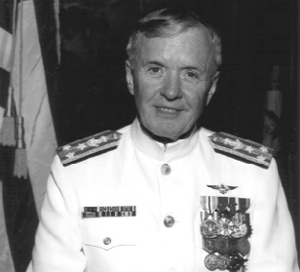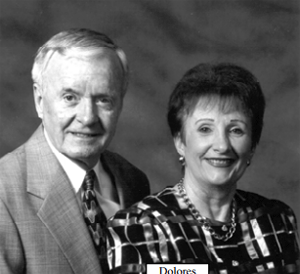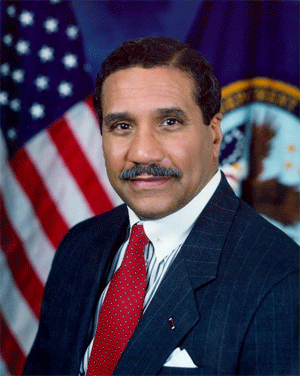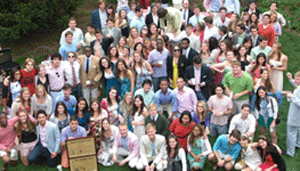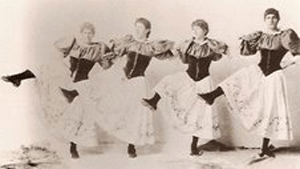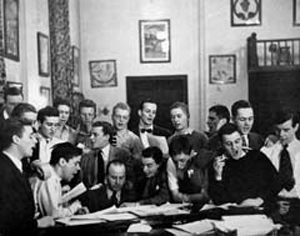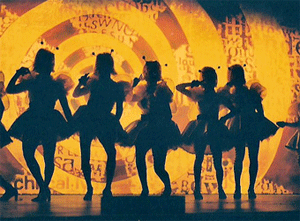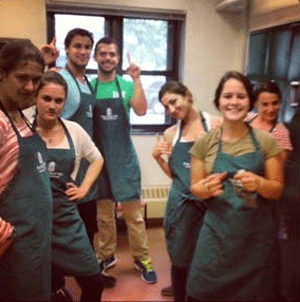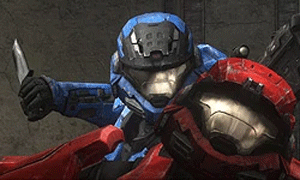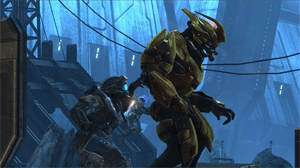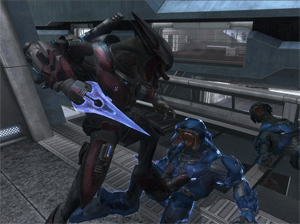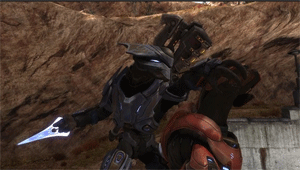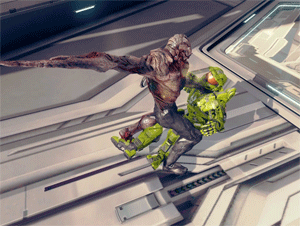Interview with Debra von Trappby Sherman H. Skolnick
Transcribed by Brian Francis Redman
May 5, 1995
NOTICE: THIS WORK MAY BE PROTECTED BY COPYRIGHTYOU ARE REQUIRED TO READ
THE COPYRIGHT NOTICE AT THIS LINK BEFORE YOU READ THE FOLLOWING WORK, THAT IS AVAILABLE SOLELY FOR PRIVATE STUDY, SCHOLARSHIP OR RESEARCH PURSUANT TO 17 U.S.C. SECTION 107 AND 108. IN THE EVENT THAT THE LIBRARY DETERMINES THAT UNLAWFUL COPYING OF THIS WORK HAS OCCURRED, THE LIBRARY HAS THE RIGHT TO BLOCK THE I.P. ADDRESS AT WHICH THE UNLAWFUL COPYING APPEARED TO HAVE OCCURRED. THANK YOU FOR RESPECTING THE RIGHTS OF COPYRIGHT OWNERS.
SHERMAN SKOLNICK: I had sent some faxes of some of our stories to Debra von Trapp. And she's with Trapp Technologies. And she called me, Friday evening, May 5th, 1995. And I told her I would like to tape a lengthy interview with her, to use on whatever media I could get it on -- whether on a radio show, or elsewhere. And so, this is the interview and discussion that I had with her.
I may pause, from time to time, to -- well, I may have to go back, in fact, and look in our file and spell some of the names that are mentioned here, that are complicated. We've got some backup documents (news stories and so on, that support her story) with complicated names from where she used to work.
But I'll begin the interview right now. SHERMAN SKOLNICK: What I wanted to find out first are some of the details; why you believe these things have been happening.
DEBRA VON TRAPP: You mean which points?
SHERMAN SKOLNICK: Well, as I understand... Well, the point is, you have been a high-level technical expert, sort of on the cutting edge of high technology. Am I correct?
DEBRA VON TRAPP: Yes.
SHERMAN SKOLNICK: In the computer field, and you've done work, apparently, worldwide.
DEBRA VON TRAPP: That's correct.
SHERMAN SKOLNICK: In the course of your work, you found out certain things, such as that
some companies were actually committing espionage and so on?DEBRA VON TRAPP: Yes.
As an outside consultant to Xerox Corporation, I was selecting foreign management for a division called Shugart back in the early '80s in Germany, when I discovered that the Shugart division of Xerox was, in fact, bringing disk drives -- which were manufactured by [Matshusta(?)] in Japan -- they were manufactured there, brought into Sunnyvale, California, labeled for Shugart, and then sent to the Shugart Munich facility in Germany, where, after having been received under Cocomm(?) freight documents (which were legally forwarded in the U.S.), the freight documents were then changed to show that they were forwarded to destinations at Olivetti, Italy and a company in France (which were legal trading partners of the U.S.) when, in fact, the sales records were being changed and ultimately destroyed by the Shugart employees -- allegedly, for tax evasion purposes.
But, in fact, the [disk] drives were being put on trucks and sent into the East Bloc, to an entity called IsoTempex(sp?); they were selling to the KGB.SHERMAN SKOLNICK: So in other words, this was early in the '80s, when it was really quite unlawful for American companies to be sending hard disk drives to the Eastern Bloc, am I correct?
DEBRA VON TRAPP: That's correct.And at the same time, Xerox Corporation was, in fact, conducting CIA training camp at its Leesburg, Virginia facility.
SHERMAN SKOLNICK: So some of the big companies in America have been into East-West espionage.
DEBRA VON TRAPP: Yes. In fact, Aldrich Ames was the chief of Russian counter-intelligence at the time. And "Rick" Ames and a director of operations at Xerox/CIA (which was Daniel Starkey), he and Ames and a few senior officials, both at Xerox and the CIA, were pocketing the cash out of that operation.
SHERMAN SKOLNICK: So in other words, there's some angles of the Aldrich Ames spy scandal that the, has not come out, which you're just mentioning now.
DEBRA VON TRAPP: Right. But in fact, that all connects forward to what we're looking at today: with some of the same team of people out of CIA and FBI... Ultimately, that were involved with all of these folks.
SHERMAN SKOLNICK: In other words, that the Aldrich Ames scandal, they haven't gone into this; there's a lot to it yet, in other words.
DEBRA VON TRAPP: Yes.
SHERMAN SKOLNICK: Tell me this: in the process of learning about this, this type of thing, I understand that you became knowledgeable about the fact that the Japanese have been spying on the Clinton White House. Is that correct?
DEBRA VON TRAPP: That's correct. But it wasn't outside knowledge; I was inside that operation.
Some of the same people that came out of that Xerox/"Rick" Ames scenario in the early '80s then transitioned... There's a specific person, Robert Goetzman, who is a high-ranking FBI official, who has what is known as "dual agency" -- he operates, also, out of the CIA -- and had a heavy relationship with Daniel Starkey out at Xerox.
When I had, ultimately, decided to go to the FBI over what I knew about Xerox and then discovered that that investigation had been completely closed. And then I was ultimately threatened -- both myself and my son -- by Xerox officials and their outside counsel. When they failed to intimidate me, and I had actually ended up in litigation with them.
SHERMAN SKOLNICK: Yeah, I noticed some of the stories from '91 and '92 about your litigation with Xerox.
DEBRA VON TRAPP: That actually went up through this year. We were still in federal court, as of last year, over that.
SHERMAN SKOLNICK: So in other words, some of these things have been a matter of court record, but are not too well-known to the public.
DEBRA VON TRAPP: That's right. And actually, we have substantial court records, between myself and MCA, Mitsubishi, and Xerox, at different times while they've tried to insure that I wouldn't discuss this with any of the mainstream media or have the public become knowledgeable about it.
SHERMAN SKOLNICK: So you are of the opinion that, from what you know, that there's a tremendous fight between the Washington government and the Tokyo government -- sort of a financial fight, having to do with the Yen/Dollar ratio, and so on?
DEBRA VON TRAPP: Yes. And that's derivative of the fact that
Robert Goetzman, when he approached me on behalf of Xerox in 1991 to dissuade me, by threat, to get out of court with them, he did not identify himself as FBI. He introduced himself as being from the Executive Office of the President, under Mr. Bush. And ultimately, [he] persuaded me, by threat, as a trade-off to not having my son killed, to cooperate with them in introductions to CEOs and chairmen within the computer industry to be able to view their, what we would know as their "black hole technology", which was technology and development that was very advanced, that was not released to the public and was well-ahead of the government developments in various projects, in many cases. And that introduction, and that project that we were on, was actually a national network surveillance project that was partially based out of an Air Force base in Alabama, and was related to the officers from the Air Force that were in the downed aircraft in Alabama, two days before the Oklahoma...SHERMAN SKOLNICK: Yeah. In other words, a day-and-a-half before, on Monday, April 17th, 1995, there was a high-level military group on a military Lear Jet, that crashed -- apparently... Well, the story in the press said that they were on their way from Andrews Air Force Base to San Antonio. But, apparently, the plane blew up, or something happened to it, as they were over Alabama.
DEBRA VON TRAPP: Yes. Because
the same, the Special Ops team that was under Goetzman, contracted by he and his team, and paid for with Japanese government funds through MCA Universal and administered through the Embassy of Japan, in Washington... Some members of a Special Ops team out of Alabama are responsible -- both for the downing of that craft, and for taking down the Oklahoma federal building.____________________
Interview with Debra von Trappby Chuck ___
June 25, 1995
NOTICE: THIS WORK MAY BE PROTECTED BY COPYRIGHTYOU ARE REQUIRED TO READ
THE COPYRIGHT NOTICE AT THIS LINK BEFORE YOU READ THE FOLLOWING WORK, THAT IS AVAILABLE SOLELY FOR PRIVATE STUDY, SCHOLARSHIP OR RESEARCH PURSUANT TO 17 U.S.C. SECTION 107 AND 108. IN THE EVENT THAT THE LIBRARY DETERMINES THAT UNLAWFUL COPYING OF THIS WORK HAS OCCURRED, THE LIBRARY HAS THE RIGHT TO BLOCK THE I.P. ADDRESS AT WHICH THE UNLAWFUL COPYING APPEARED TO HAVE OCCURRED. THANK YOU FOR RESPECTING THE RIGHTS OF COPYRIGHT OWNERS.
Here's an interview I did again with Debra Von Trapp on 6/25/95. My intent was to answer a lot of questions I've been asked by people who read the original interview by Sherman Skolnick and ones that I had myself.Chuck: Let's see. You say your information was classified as "A2".
Debra: The statement is from the new interim commander of the militia, that . . .
Chuck: Militia of Michigan, right?
Debra: . . . Militia of Michigan . . . that one of the members stepped forward during the meeting in which he was appointed interim commander and he furnished him with information regarding a translator that dealt with a document for the Japanese government that confirmed my information and this person described this document which classified it as "A2". . .
Chuck: Okay
Debra: . . . which in his common language, he described it being verified information and verified participants. Uh, so that's why the interim commander gave me a call just a few days after he was appointed and discussed that with me and then additionally, that an ex-White House official who is still with the government has been transferred to another post, stepped forward and signed a document for Sherman Skolnick a few days ago which confirms my information and that was the reason why Sherman Skolnick called me and stated to me that he had confirmed my information, and ...
Chuck: Now when you say confirmed your information, you're talking about that the Japanese hired, or contracted the job to bomb the building in Oklahoma City, right?
Debra: The way . . . the way . . Sherman was not specific in that detail, Sherman said "your information" and left it at that. And so . . . I haven't . . . Sherman was on two other phone calls as I understood . . .
Chuck: That sounds like him.
Debra: . . . when I called him back from my call. And I asked him to follow up with me on it and he told me that he was preparing one of his reports that he usually puts out . . .
Chuck: Yeah, he faxes them to me.
Debra: . . . and that his report would contain as much information as he could provide without revealing the identity of the person signing the statement for him because at this point he is concerned that that person is jeopardized. And I can certainly understand that because,
considering that I worked with the people that killed Vince Foster, and the individual that confirmed my information to him, additionally confirmed that Vince Foster died as a result of being part of that larger operation which included the Japanese surveillance on White House communications and Skolnick did confirm that much to me, that it was absolutely confirmed, that the Japanese government had in fact conducted that surveillance operation on the Executive Office of the President.Chuck: So, um . . .
Debra: Of course I went out and helped purchase the equipment for it and operated with the Japanese officials on it, so, you know, it didn't need to be confirmed to me, but . . . .
Chuck: So, were you aware that this type of capability was in place when you were purchasing the equipment? I mean were you...
Debra: Did I know we were bugging the White House?
Chuck: Yeah.
Debra: Absolutely.
Chuck: Oh . . okay.
Debra: I didn't know at that time that we were operating on Japanese government funds. I found that out later.
I knew that we were actively surveilling the Clinton administration.Chuck: And who did you think was . . was . . uh . .
Debra: I thought that I was conducting consulting to certain government offices.
The persons that were conducting that operation had been identified to me as CIA, FBI and Defense Intelligence Agency. And so, I was, um, operating, if you will or accompanying government employees conducting that operation.
Chuck: Okay.
Debra: So, to the best of my knowledge at that moment, I believed that we were still operating on behalf of CIA, black budget funds.
Chuck: How did they commission you to do this. Did you have to pass some kind of security, like an EBI (extended background investigation) or something like that, or, I mean how did you kind of get into the business of doing things like these.
Debra: That's an interesting question Chuck. That's the kind of information that I will bring forward at an unedited live civic hearing.
Chuck: Oh, I see.
Debra: And if it can't be conducted there then it will be conducted sooner at a live unedited press conference with the surviving members of that event and their families, including Edye Smith and her father.
Chuck: And do you anticipate that being . . . soon . . or . .
Debra: I believe that that's going to take place, um, . . . I would say within the next 30 days. I know that the state panel that's been, uh . . proposed and should be embodied within the next week will have subpoena power. And as long as they have subpoena power that I intend to become part of their investigation. Additionally there are federal procedures that allow third parties to intercede in criminal hearings and I intend to have counsel intercede on my behalf in the prosecution proceeding against Tim McVeigh. So I will enter that proceeding as a third party on behalf of myself and on behalf of the victims and survivors.
Chuck: I see.
Debra: To provide the testimony that I have regarding that event.
Chuck: Okay.
Debra: It would be reasonable to believe that McVeigh's attorney will subpoena me anyway as a witness.
Chuck: Oh yes, definitely.
Debra: The prosecution obviously, would rather that I didn't discuss any us this because it doesn't help their . . the . . fabricated story that they have created.
Chuck: Well, who is Tim McVeigh, I mean as far as your perspective goes. I mean . . how . . was he involved, was he not. I mean it's just kinda like somebody that they happened to find out on the road at that time of the morning. I mean where did they find this guy.
Debra: Well, it sounds like you haven't followed Brian Redman's transcript of Skolnick's interview with, to ask that kind of question.
Chuck: Well, actually, I did, I read it, but it's been awhile. In fact I have a copy of it in my briefcase. I don't recall you addressing, other than uh, . . I don't know . . I read so many things. I don't know if he was a patsy or not.
Debra: The statement that I have made about Tim McVeigh is the following:
Chuck: Okay.
Debra:
Tim McVeigh, had nothing to do with the Oklahoma City bombing. He was not present at the bombing. He did not have a Ryder truck there. There was no Ryder truck in front of the building. There was no fertilizer bomb. And there was no fertilizer bomb inside a Ryder truck in front of the Murrah building in Oklahoma City, on April 19th, 1995.Chuck: Okay.
Debra: And to date, that statement that I have made consistently, daily since April 19th, 1995, is consistent with all known evidence brought forward at this time.
Chuck: Okay, but what about that . . remember the . . they show the axle, I've seen this on TV, I don't know . . .
Debra: Yeah, the infamous axle.
Chuck: Yeah!
Debra: Yeah, did you hear the first reports they ever brought out where none other than Governor Keating(sp?) himself personally found it?
Chuck: (laughs) No, I didn't hear that!
Debra: Well, if you were in the midwest at all, all major news broadcasts reported for a couple of days that he personally found it, retrieved, and turned it over for evidence. Then miraculously . . . sort of like the Ryder truck, um, the vehicle that came from Arizona and pulled over with McVeigh but then was found in a driveway in Arizona with rusted axles in place.
Chuck: (laughs) I see.
Debra: Miraculously that story changed and suddenly Governor Keating was never there and never found it. It became "a policeman found it".
Chuck: Oh, I see.
Debra: But if you compare the original newscast to the later newscast, it's another FBI fairytale. And . . and . . I don't have time to go into the details now, but if you choose to pursue Governor Keating's personal friendships and relationships politically you will find an interesting tie between the Governor, the persons prosecuting Tim McVeigh, the ATF, and the FBI.
Chuck: And you know they did mention that uh, the VIN number was on the axle? The Vehicle Identification Number? Now, I've worked in the automotive business, and I know where the VIN numbers are and they are not on the axle. They just aren't. They're in the door jam, they're on the . . . you know . . . they're all over the place, but they aren't on the axle! I can tell you that right now.
Debra: Yeah, but they had to be on this story. It's like Tim McVeigh had to . . . you know, a week later they decided he must have had a folded up Ryder truck in the front pocket of his shirt. (laughs) And the story that came out right after he was arrested and they couldn't explain why they left his car on the side of the road for a couple of days, you know the most important piece of evidence in America at the time.
Chuck: You would think so.
Debra: And then they came out with this story that they expected to find the missing license plate off the back of his car in the rubble of the Murrah building.
Chuck: Yeah, because it "fell off", or . . I don't know . . .
Debra: Yeah, now that was what was really going to be the magic . . . better than the magic bullet with Kennedy, we're going to have the magic license plate, because according to their theory, the axle blew off a Ryder truck and went blocks down the street the other direction, but he had run to a car, a getaway car, positioned somewhere far away from the front of the building and only the license plate would have miraculously jumped off the back of the car into the rubble, it must have passed the axle, mid-air, going off in the other direction . . .
Chuck: (sarcastically) Well, I guess it could happen . . .
Debra: Yeah, you know, it probably saw the Roadrunner go by and honk (laughs). The stories just stretch credulity and all reasonable thinking to the point at this moment most of America must be sitting in stunned disbelief that the FBI, the ATF, Janet Reno, anybody else, would have them believe any part of this story regarding Tim McVeigh. It's just, uh . . .
Chuck: It's way out there.
Debra: It's . . it's so far out, it's past science fiction at this point.
Chuck: (laughs) It's not even good fiction, at that.
Debra: It's not! You know and then I get attacked (laughs) by Dateline who decides not to air my interview, carefully words an attack on me where if you play . . . replay their tape you see that they've put together two phone mail messages that were unrelated to each other and even the intonations are different and in fact where they say I am making a statement about them, a lot of reasonable people have pointed out to me that independent of my statement regarding that, they noticed that it is actually in question form, uh, where they're accusing me of a statement that I had suggested that they were the front for somebody. You know, I think everybody has pretty much figured out on the Dateline piece as well that they didn't present any of the information that's allegedly known to 3 to 5 million people. There's not one detail that they advanced.
Chuck: Yeah, I know.
Debra: So that's why I suggested that it might be prudent to go ahead and put out the Dateline tape and what I've offered to do at the end of the live interview between me and Chris Hanson, I'm including one of the recorded telephone conversations between myself and one of the federal employees . . .
Chuck: Um . .
Debra: . . . making a threat directly against me, telling me that I will be killed if I talk about the Embassy of Japan or the Executive Office operation.
Chuck: Now was that before they actually attempt that . . I remember . . now this is a part I remember . . in the interview with you and Sherman, you said that they left you for dead 100 miles from your house.
Debra: (solemn) That's correct.
Chuck: Um . . .
Debra: And that's not even a subject that I'm going to discuss. And I haven't discussed it with anybody other than to make that statement.
Chuck: Okay.
Debra: I actually have the tape recordings of them discussing that with me as well.
Chuck: But that is verifiable, right?
Debra: (very quiet) Yes, it is.
Chuck: Because that is probably the most commonly asked question I get when people read the interview that you did with Sherman, is that, why is this woman still alive.
Debra: I have $25,000 worth of medical bills, that's why I'm still alive.
Chuck: And I say, "read the interview and she talks about it."
Debra: They aren't sure why I survived what I was put through either. I think it was the sheer determination, not to um, . . .
Chuck: Not to give . . not to . .
Debra: . . to come back to my son.
Chuck: Hmm.
Debra: I think the government has wholly under-estimated a mother's will. Both with Edye Smith and myself. They consistently told Edye to quit asking questions and to shut up.
Chuck: Now, who's Edye Smith?
Debra: She's the mom of the . . Coulton and Chase, the two little boys killed in the daycare center.
Chuck: The two and the three year old?
Debra: Right. And I've talked with Edye a couple of times and I've talked with her dad, more than that, and I've committed to them, no matter what sort of personal attack that I face over this, that I will not be dissuaded from bringing this information forward, providing the evidence, standing shoulder to shoulder with them, asking the same questions and demanding that the American public be given the actual information regarding this whole circumstance.
Chuck: The moral of this story being, don't mess with mom, right?
Debra: I think it's don't mess with the American public.
Chuck: Well, that's the bigger story.
Debra: Yeah, and this isn't a nation of two separate sets of people which is what it's beginning to look like.
We have a number of people within the government and within the intelligence community that have determined that for their own personal gain and power that they are going to have this country, and that the rest of us are here at their convenience or their will, and that includes their view that there should be no repercussion, no explanation and no prosecution for murdering innocent citizens in their behind-the-scenes turf wars and that's what that effectively was about.Chuck: Now who are, when you say, "these people", are you referring to the CIA or is it the New World Order crowd.
Debra: You know, I had never even heard the term New World Order. I mean I'm very conservative, mainstream, Republican, professional, you know, I didn't, I . . .
Chuck: Well, you live in Orange County, you have to be.
Debra: You're right, you know. I'm the same gal that stood at the door at the Nixon library with the Presidents during the funeral. I'm obviously, according to this government, this Secret Service and to this military, one of the most trust-worthy people in this country. Yet I start talking about the middle of the operation I was in, and people are attacking me and suggesting otherwise. And I had never heard the term, "New World Order".
As far as I know these are the terms I am intimately familiar with: the Justice Department, The Organized Crime and Racketeering section, the Central Intelligence Agency, the Federal Bureau of Investigation, the Nuclear Regulatory Agency or however it was classified that we were dealing with, the Defense Intelligence Agency, the National Security Agency, the National Security Council. These are the places that I experienced, worked around with, through, on a daily basis for a number of years and those are terms and places that the American public don't ever deal with, rarely encounter, even discuss, and certainly usually are unaffected by, and those are the places that I have been and exposed to for all of this time. And I'm politically know as not being a person that discusses myself politically and if anything would be described as a conservative. My actual view is the best person that we could have as the next President, is Pat Buchanan. That we could certainly, you know . . it couldn't hurt this country to get into a very mainstream, conservative mode and go clean up a lot of the mess we're in and that doesn't sit well with the people that are trying to paint me as being . . somehow . . having some kind of relationship with the militia or you know any of these other things I've heard including this Dateline statement that I've said I had government enemies. I have never made that statement, have never suggested it.
I know that the people that I'm discussing currently, that are part of the government operation that I was involved in, can't be happy about what I'm discussing, but I have never termed them as enemies. I spent virtually every day of my life for years with these men, you know, either in person or on the phone. I mean I've been closer and more intimately familiar with these people than I have been with my family members, for the most part, except with my son, for all of this time.Chuck: Over what period of time was that?
Debra: Oh, uh, I first crossed the Aldrich Ames and CIA operation back in 1982.
Chuck: Okay.
Debra: So I have a long history with government intelligence. Um, and it's been, exposed to, familiar with, introduced to, other agencies, other areas, for you know, all of these years up until now. So, it's not, you know . . I don't today characterize anybody that I'm even discussing in terms of the crimes they've committed as my enemy. I think they are extremely unhappy probably with what I'm discussing but, I have never even characterized them that way.
Chuck: Okay . . I think . . .
Debra: It's hard to tell, especially when they're not responding. (laughs) I mean Leon Paneta's assistant in his office has flatly stated to me that I am welcome to call or fax any time. I was given a 24 hour phone number to Mr. Perry's office. He's the Secretary of Defense. I have an administrative assistant's phone number into Mr. Clinton's office, and I happened to know that, the documents that I provide into that office, are hand delivered to him, and not, uh . . .
Chuck: Into Clinton's office?
Debra: . . . into Clinton's office . . because of the circumstances surrounding all of this. You know, that has been stated to me. Um, I feel that if someone was very disturbed about what I'm discussing, they would step forward and say so. And so far Mr. Clinton hasn't called me and suggested that. Other than a few of the people I've actually named like
Robert Goetzman, and Jim Coefield(sp?) and Wes Thomas, these are some of the people that have quite pointedly told me to quit talking or I will be killed.Chuck: Goetzman and the other two?
Debra: Yeah.
Chuck: Oh, okay.
Debra: But they're also widely known to be government intelligence and they've made the mistake of trying to deny that now to certain people, but yet on the other hand, they've been so unabashedly careless about disclosing that to people even in meetings that I've conducted with them, with third parties, that they have no way of taking that back.
Chuck: Yeah.
Debra: Their cover is blown.
Chuck: Yeah that's what really surprised me, especially about Goetzman the way he was handing out the MCA cards and kinda . .
Debra: Goetzman openly, in the computer industry, introduced himself as being from the Executive Office of the President. So, it's a little hard for him to try to retract that now and put on this front of "Gee, I'm just a businessman in Florida."
Chuck: Do you think that that was just because of . . maybe . . he was kind of full of the fact that he was from the Executive Office. He was kinda like "Gosh I'm a big wheel now" type of thing.
Debra: Well, I think that . .
Chuck: I mean why would he compromise himself like that? It, . . . you know . . it seems like he's compromising himself, anyway.
Debra: They all are, but this is my take on this.
These are old guard, high level, intelligence members of the government, that have , um, . . that operate in more than one capacity, in more than one agency, that have a tremendous amount of authority and autonomy and huge budgets to deal with, and not unlike many of the high ranking government officials that I've been around lead a lifestyle that conflicts financially with government employment where they enjoy the finer things of life. They enjoy making a point of that, they enjoy the social side of that, they especially enjoy engaging in cocktail type functions which includes a lot of drinking. I have been around all of these men when they engaged in that on a consistent basis. I have freely described in my personal opinion, not a medical opinion, because I'm not medically qualified, but in my personal observations of a great deal amount of time, over a number of years, in many different locations around this country, I have spent a great deal of time, personally viewing Robert Goetzman ingesting a great amount of alcohol and believe that his propensity to do so, in combination with, his . . what I believe is a great ego, leads him to make statements which he carelessly makes and which ultimately blow his cover, as a government's intelligence . . er, a member of the government intelligence community.Chuck: And does that seem to be especially him, or are they all that way?
Debra: They're pretty much are all that way. It's a good old boy network, they're all pretty much in that same mode.Chuck: I see, the tough guy, party hardy type, huh?
Debra: These are all guys that are in their 50's that are senior and very comfortable. I think that they don't worry about that at all. In fact there was only one occasion that I ever saw Robert Goetzman not drinking around me and we were out to dinner in Atlanta and he was with another person who was introduced to me as FBI, that I will not name, and it was Goetzman, this other man, myself and a person that I brought along with me at the last minute that I had previously discussed with Goetzman but he did not know was going to be part of the dinner party and this person is a well regarded journalist, who was previously with a major network and the correspondent to the State Department. And when we showed up together, Goetzman became enraged, sort of, off-to-the-side making a point to me that he was extremely upset that I had brought this person along because these guys were out to have a good time on the town in Atlanta that night. He even said, "I know what you're doing. You're not going to get away with it," which was, he believed that I brought this person along to somehow expose him or set him up. In fact nothing could be further from the truth. The other person and I were simply friends. I have a high regard for him. He had no other plans that evening. We had already been to a social function attached to COMDEX together at two locations and I simply invited him to complete the evening with us. And we ended up on some COMDEX transportation, you know how they do these shuttle bus things?
Chuck: Uh, huh.
Debra: . . . and he was gonna get off at the next stop and my next stop was to meet Goetzman and this other guy, and I simply said, "Just tag along, all we're gonna do is eat dinner." And instead, Goetzman just went into orbit over it.
Chuck: Really
Debra: And that's the only time he refused to drink. He was so uptight. That . . . I mean, he was just beside himself the whole evening.
Chuck: Probably the one time he needed it, right?
Debra: Yeah! (laughs)
Chuck: Also, in the interview with Sherman, you had mentioned . . . kinda going off in another track here . . . INSLAW software.
Debra: Uh huh.
Chuck: Now that's banking software, right?
Debra: Yep. Well, there are different versions of the PROMIS software. The CIA did a number of different things with that code. So it . . it's . . that code is . . um . .extremely useful. It, in it's capabilities, can do high speed transmission of a number of things and the range goes all the way from monetary transactions to video transmission.Chuck: But wouldn't that also depend on the hardware? I mean as far as being able to handle that type of throughput? Is that where the satellite technology comes in?
Debra: Well, now, you know what, the hardware isn't such an issue on that kind of technology.
Chuck: Okay. What kind of transfer . . when you say "high speed transfer rates" is that like what? Or am I getting into an area I shouldn't be getting into?
Debra: Well, it's not an area that I can discuss. But I can tell you that when you think in terms . . . this is what I . . at the most . . . I guess . . "common man", level of description, that . . when you think in terms of how you can use your VISA card at a store and in just moments it goes into a system nationwide and comes back to you, and ID's you and can check your signature (nothing checks your signature except for the clerk) or your banking pattern of purchases and all of that . . .
Chuck: Or the credit balance.
Debra: Right. And how momentary that is.
Consider doing public surveillance and taking photographs of just someone standing on a street corner, and instantaneously being able to do video transfer, comparison, and to databanks of known suspects, terrorists, political enemies, people you would like to set up, if you were in the government. Anything like that, you know, being able to instantaneously compare it and place it even back, that information back to some person, close to the locality you just viewed.Chuck: That's pretty scary stuff.
